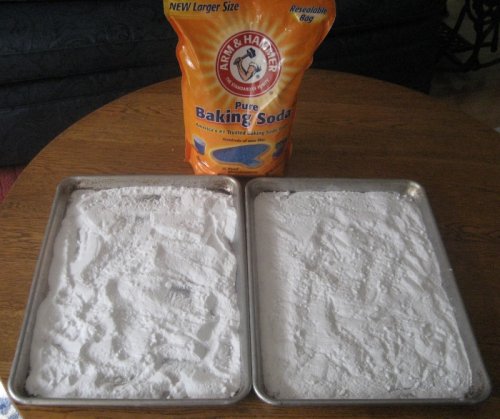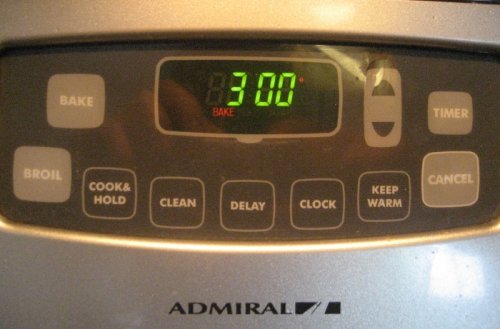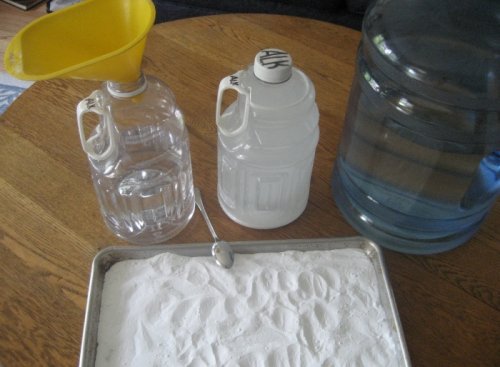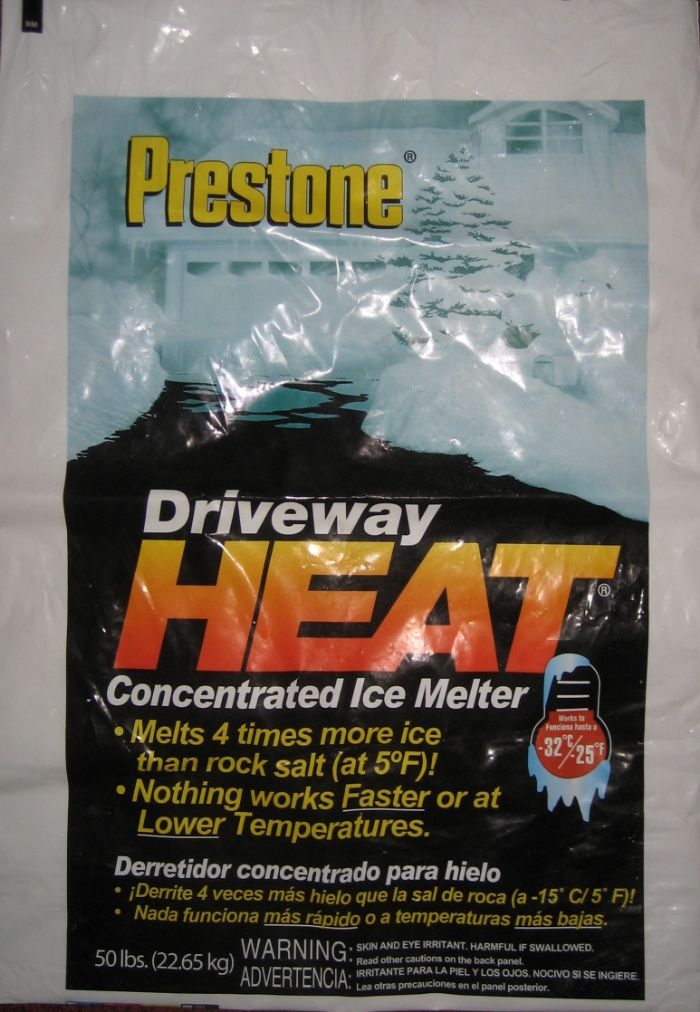It was time to cook up a little more Alk, and I thought I’d share my experience in the kitchen. I purposely don’t want to mention that “C” word, because I think many are scared away when they hear that word.
If you’re a two part user, this is an easy-peasy-lemon-squeezy recipe that anyone could do. I start with Baking Soda…..regular Arm & Hammer that I get at Sam’s for $6.87 for a 13.5 pound bag. This one bag will make approximately 12 gallons of alk.
So I’m going to cook up enough for two gallons. I start with two aluminum cookie sheets, and to each one I add 2 ¼ cups of baking soda. By the way any cookie sheets will work….they don’t have to be aluminum….ceramic coated steel is fine as is any other cookie sheet.

While I’m doing my measuring, I preheat the oven to 300 degrees.

Place the trays in the oven and bake for an hour. Here’s one of the great things….it doesn’t matter if it goes longer. I asked my wife to turn off the oven when the timer went off while I was working outside. I came back into the house about two hours later, and it was still in the oven cooking….and I knew it didn’t matter. You can’t “overcook” this stuff.
Here’s another great thing. If you’re in a rush, you can mix the cooked baking soda while it’s still hot….it doesn’t matter. However, I let it cool so that I could easily handle the cookie sheets without getting burnt.
I use two old one gallon juice jugs. I fill them about half full with RO/DI water. Using a funnel, I add all the baking soda from one of the cookie sheets to the half filled bottle. Once all the baking soda is in the jug (from one cookie sheet), I top off to one gallon with RO/DI and shake. The powder quickly goes into solution. Now if you don’t mix right away, like I did with the second one, a “cake” will form on the bottom. That’s OK. Just start shaking and break up the cake. It will now take a few hours for this to go into solution, but no damage done.
Here you can see one gallon that was just topped off with RO/DI water, while the other one is ready to receive the last slug of cooked baking soda through the funnel.

And that’s it. This is the same stuff as B-Ionic Alkalinity solution at a fraction of the cost.
One last point; if you have high pH, you don’t need to cook the baking soda. Simply mix 2 ¼ cups baking soda to one gallon of RO/DI water.
This recipe isn’t my doing, it came from Chef Randy Holmes Farley from THIS article.
If you’re a two part user, this is an easy-peasy-lemon-squeezy recipe that anyone could do. I start with Baking Soda…..regular Arm & Hammer that I get at Sam’s for $6.87 for a 13.5 pound bag. This one bag will make approximately 12 gallons of alk.
So I’m going to cook up enough for two gallons. I start with two aluminum cookie sheets, and to each one I add 2 ¼ cups of baking soda. By the way any cookie sheets will work….they don’t have to be aluminum….ceramic coated steel is fine as is any other cookie sheet.

While I’m doing my measuring, I preheat the oven to 300 degrees.

Place the trays in the oven and bake for an hour. Here’s one of the great things….it doesn’t matter if it goes longer. I asked my wife to turn off the oven when the timer went off while I was working outside. I came back into the house about two hours later, and it was still in the oven cooking….and I knew it didn’t matter. You can’t “overcook” this stuff.
Here’s another great thing. If you’re in a rush, you can mix the cooked baking soda while it’s still hot….it doesn’t matter. However, I let it cool so that I could easily handle the cookie sheets without getting burnt.
I use two old one gallon juice jugs. I fill them about half full with RO/DI water. Using a funnel, I add all the baking soda from one of the cookie sheets to the half filled bottle. Once all the baking soda is in the jug (from one cookie sheet), I top off to one gallon with RO/DI and shake. The powder quickly goes into solution. Now if you don’t mix right away, like I did with the second one, a “cake” will form on the bottom. That’s OK. Just start shaking and break up the cake. It will now take a few hours for this to go into solution, but no damage done.
Here you can see one gallon that was just topped off with RO/DI water, while the other one is ready to receive the last slug of cooked baking soda through the funnel.

And that’s it. This is the same stuff as B-Ionic Alkalinity solution at a fraction of the cost.
One last point; if you have high pH, you don’t need to cook the baking soda. Simply mix 2 ¼ cups baking soda to one gallon of RO/DI water.
This recipe isn’t my doing, it came from Chef Randy Holmes Farley from THIS article.
Last edited:





